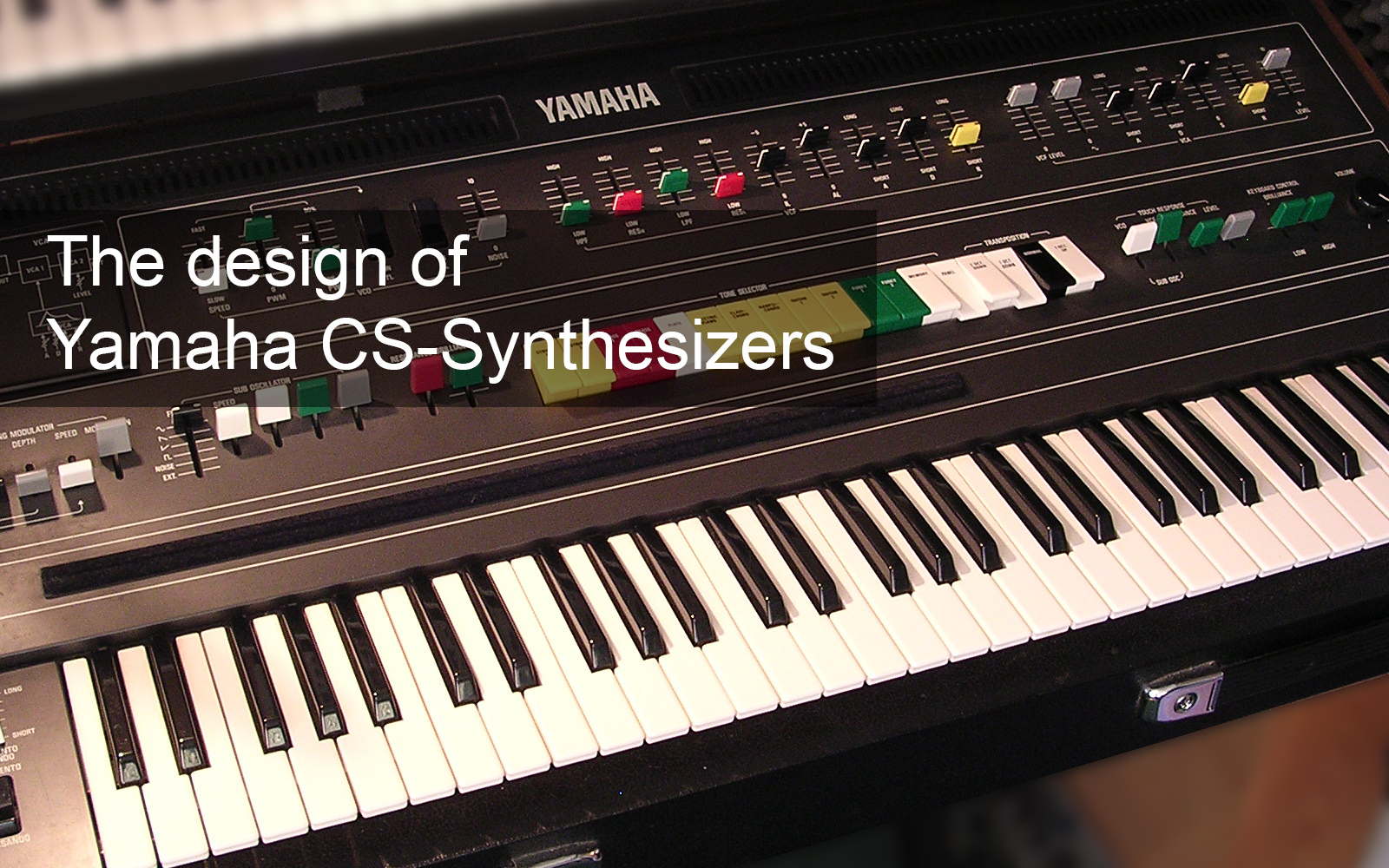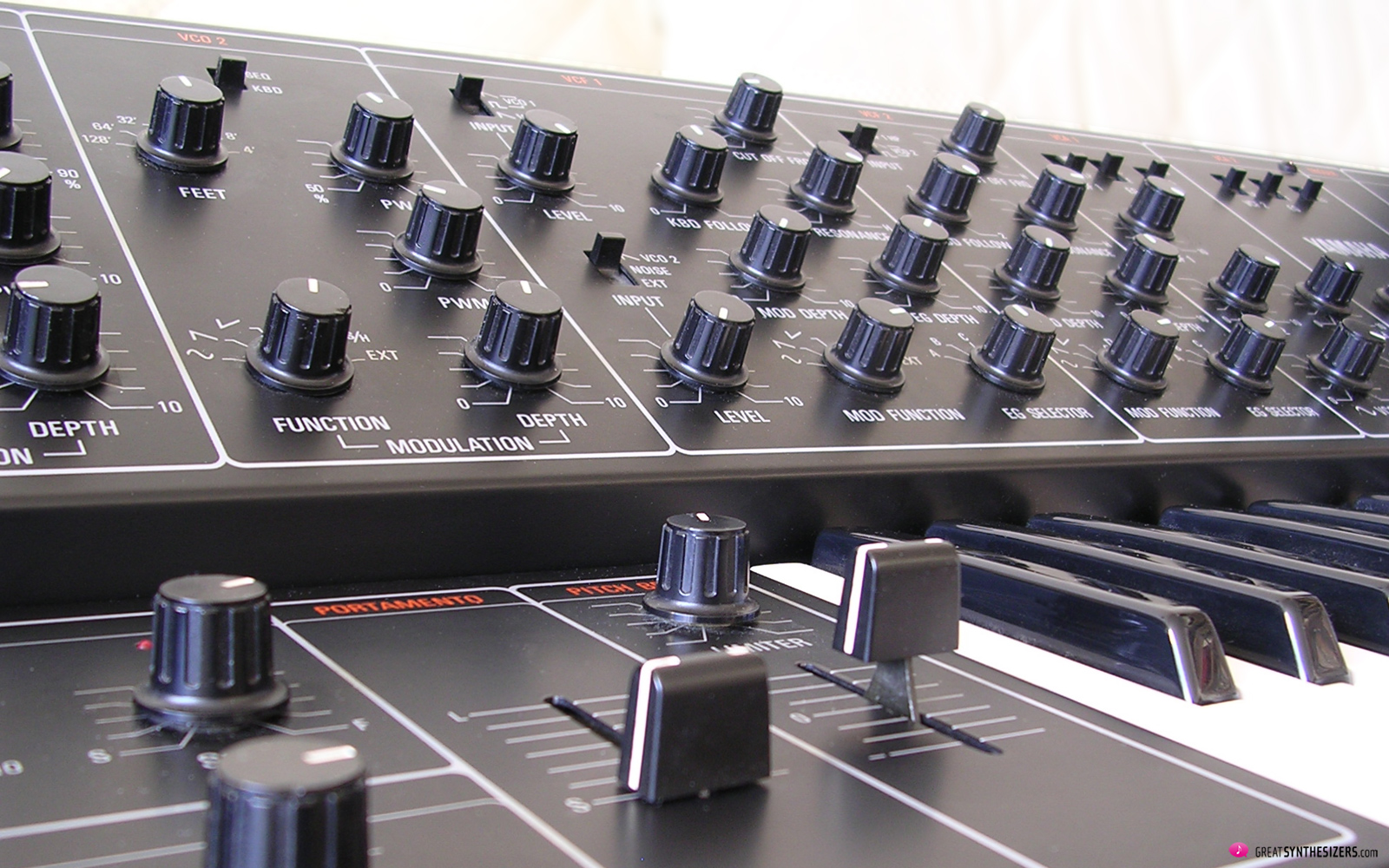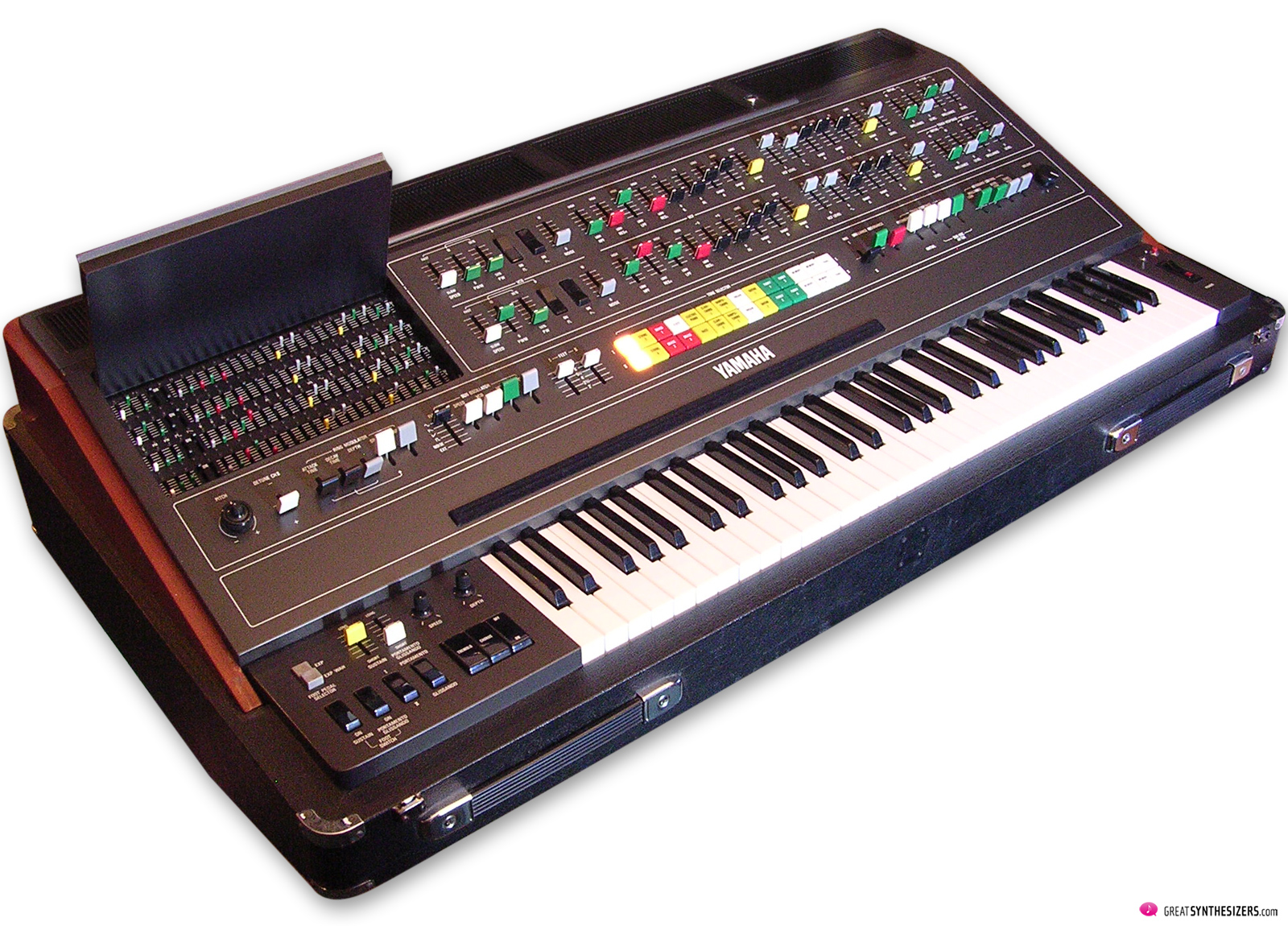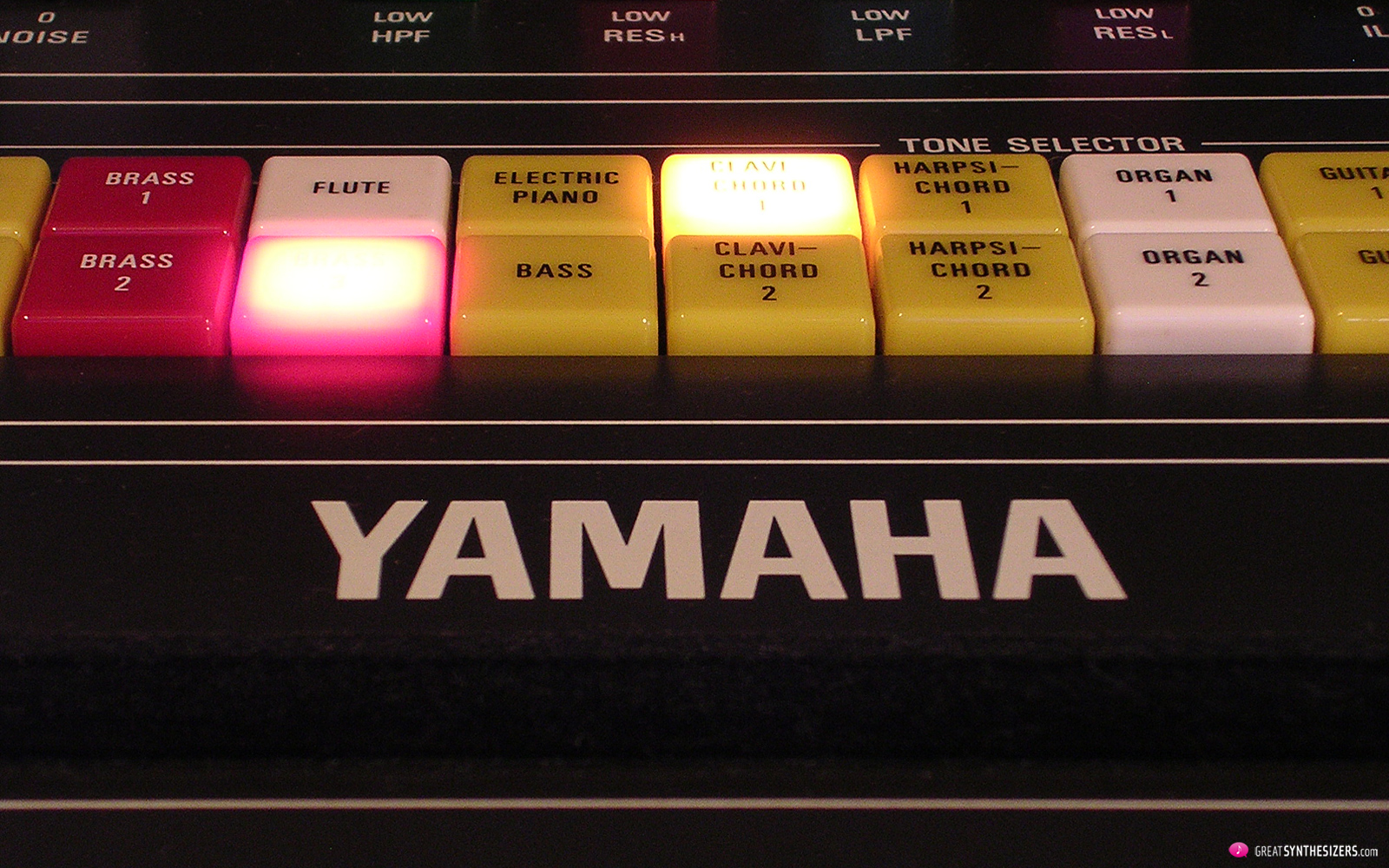Bob Moog noted that human hand- and arm-physiology is better adapted to turning knobs than pushing sliders, and this clearly influenced his approach to synthesizer design (ergo, any Moog synth with sliders wasn’t designed by him!). Biomechanical arguments aside, there is no doubt that the tactile controls on a synth can greatly influence how one interfaces with and enjoys that instrument, and we certainly find this to be the case in the Yamaha CS synths.
The 50/60/80 were laden with luxurious-feeling levers (not sliders) that gave a reassuringly firm resistance when you moved them. In the black and M eras, cheaper sliders replaced levers and these were relegated to only envelope control (with the exception of the CS-5 and 10, which used knobs), and to performance controls.
True to Yamaha form, performance control type and function varied not only from era to era, but also from model to model. The CS-50/60/80 were by far the most performance orientated, and there are a large number of performance-focused controls on those models.
The black era reduced the number to two or three sliders that controlled a combination of filter brightness, portamento, or pitch-bend. Among these, the least seen but perhaps most interesting is the CS-15 pitch-bend, which is is spring-loaded and slowly moves back to center once released. Left-hand slider control over portamento is also surprisingly effective for real-time changes and feels much more natural compared to the ubiquitous glide knob that is found on most other synth companies’ products.
Once we get to the M era, Yamaha apparently decided to jump on the pitch and modulation wheel bandwagon (first put in motion by the Minimoog), but still used sliders for portamento and sustain until the CS-70M, at which point performance control sliders were dropped entirely.
One final example of a feature that modulates (if you will) between the different CS eras is the ring-modulator. We first find this feature on all three CS polys, where there is a separate non-keyboard-tracking modulator and carrier pitch envelope.
Among the black era synths, a ring-modulator is only found on the CS-30/30L, where it is a different design: oscillator 2 becomes the modulator for oscillator 1, and because oscillator 2 tracks the keyboard (unless you set it to Sequencer control) this creates a distinct ring-modulator tone, one that yields some excellent vocal formant type sounds.
Frustratingly, however, and true to Yamaha’s penchant for excluding obvious features, there is no way to modulate the modulator or carrier using one of the numerous envelopes (which you could do on the earlier CS polys).
This is despite the fact that the 30/30L even have a dedicated pitch modulation section and access to no less than three envelopes. This leaves the LFO, or, should you dare, external audio input, as the only sources of independent pitch modulation on the 30/30L (what were you thinking Yamaha?). To their credit, the 30/30L are (sadly) the only CS synths that include cross-modulation, and so what we lose in terms of ring-modulation we gain in frequency modulation. Once we get to the M era, we have returned to a separate static modulator and pitch envelope, and a ring-modulator sound that is like that of the earlier CS polys.
All In All
So, where do all these additions and subtractions and left- and right-turns through the CS history leave us today? I have largely focused on the lesser known and more esoteric differences, and none of these should distract from the fact that any of the Yamaha CS synths are still worth owning for their unique filter sound.
Also, if you consider not just the features but also the differences in tone, the variation from era to era and even model to model makes it difficult to assign the title of “best”. Personally, although I prefer the aggressive sound of the M era to the earlier CS synths and like their “everything but the kitchen sink” approach to modulation options, my favorites are actually the CS-30 for its gratuitous, almost modular signal routing (albeit a severely hampered one); and the humble CS-10, which provides all of the charms of the bigger CS monosynths in a very compact user-friendly package (that includes ergonomic envelope knobs). Oh, and not forgetting its ability to mix oscillator waveforms independently, another wonderful features that appears only on the CS-5 and 10. Sigh.
Postscript: DIY / Modificiations
Some of the more DIY-inclined among you might wonder how easy it is to rectify some of the issues highlighted above. The two-filter models, the CS-15/30/30L, seem particularly ripe for modification and there is one well-known mod (known as the “Don Solaris Modification”) for chaining the CS-15 filters in serial to create a 24dB/oct filter. There is also an easy mod for changing the LFO speed, and this could probably be applied to any CS model. There is also a standard modification to allow the CS-30’s simple but fun sequencer to receive an external clock signal. It should also be fairly easy to add another audio output to the CS-15.
Kenton, by the way, offers various CV- and MIDI-Retrofit upgrades for the CS-Series: see https://kentonuk.com/product-category/retrofit-kits-and-socket-upgrades/yamaha/.
Modifications that would directly address some of the more complex issues above, for example, the lack of independent pitch envelope modulation on oscillator 1 or 2 on the CS-30 are feasible, but have not yet been done in the wild as far as I know. According to one tech I spoke with, the solution here would be to add a switch that removes one oscillator from the pitch envelope modulation path.
Another conceivable mod would be to change the typically underused external audio input on the CS-30 to receive both AC (audio) and DC (CV) signals so that you could plug in any sort of external modulation source. In the standard model, one can plug a CV signal (no more than 5 volts, to be safe) into the external input as-is, but the signal will be unipolar and not very responsive to lower voltages, i.e., the resulting modulation is not very strong or useful.
Post-postscript: The CS01
Astute readers will note the omission of one vintage CS synth from this article — the CS01. This simple but robust-sounding synth was was aimed firmly at the consumer market and was one of the last analog synthesizers developed by Yamaha (along with the SY-20, a rare Japan-only teaching synthesizer similar to the CS-15D). It was also designed to be portable (the only CS synth that can make that claim) with its small size, battery operation, and built-in speaker.
The CS01 stands alone from the other CS synths in several technological regards as well. Firstly, it was the only Yamaha synth to utilize a DCO (a “digital tone generator” chip, to be exact; something also found in their organs from the time). Secondly, Yamaha made the very interesting decision to change filter slopes, from 12 to 24 dB/Oct (a first for them), for the mkII version. Lastly, there was the inclusion of a breath controller interface for an early bite into the growing wind synthesizer market. Perhaps this was an attempt at a synthesizer melodica with a bolder filter sound tacked on? Whatever Yamaha’s goal, the CS01’s truly outsider status makes it a worthy endnote in our tale of odd feature choices in the CS series.
x
Text: Matt Vrazo
Photos: Theo Bloderer, RL Music, Matt Vrazo
Links:
Yama-huh? Esoteric design aspects of Yamaha CS synths (Part 1)
Yamaha CS-50 / CS-60 / CS-80 – the GREAT Japanese IMPACT
x
Yamaha CS-30/L Modifications – Gearsluts Blog
“Don Solaris Modification” for Yamaha CS-15 Synthesizer (c) by Don Solaris
Kenton Eletronics CV-Socket-Upgrades / MIDI-Retrofits for Yamaha CS-Series










awesome post – I love the CS range
I have CS50 CS80 CS70M CS40 CS01 CS30!!
Plus an SK20 D65 and D85 – underrated!!
the advantage of sliders is that you can slide multiple of them at once with only one hand. You can’t turn more than one knob at a time with just one hand
… solid argument.